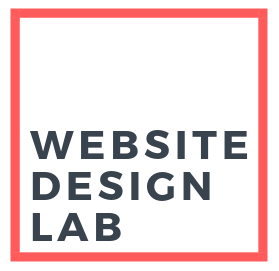Responsive Web Design is a very popular term you’ll see in the design community. Often times, many new clients want to make sure it’s included in their website, without having a full picture of what it is and why its important! Let’s fix that.
Understanding Responsive Web Design
Responsive Web Design (RWD) is an approach to web design that focuses on creating a website that provides an optimal viewing experience across multiple devices, such as desktops, tablets, and smartphones. The key to RWD is to create a flexible design that can adapt to the user’s screen size and resolution. This article will explain the main components of RWD: fluid grids, flexible images and media, media queries, and breakpoints.
Fluid Grids
One of the core components of RWD is the use of fluid grids. A fluid grid is a layout that is based on proportional values, which allow the content to adjust to the user’s screen size. This means that the website’s layout will adjust to the screen size, creating a better user experience. A fluid grid allows for a design that is not constrained by fixed pixel values, making it easier to maintain and update the website.
Flexible Images and Media
Images and media are a crucial aspect of any website. In RWD, it is important to make sure that these elements are flexible and can adapt to the user’s screen size. This can be achieved by using CSS to set the maximum width of images and videos to 100%. This ensures that the media will scale down to fit the screen size, without losing its aspect ratio.
Media Queries
Media queries are another important component of RWD. They allow the website to detect the user’s screen size and adjust the layout accordingly. By using media queries, designers can create different layouts for different devices, without having to create multiple websites. This is particularly important in today’s digital landscape, where users access websites through a range of devices with different screen sizes.
Breakpoints
Breakpoints are specific points in the design where the layout changes to fit the screen size. These points are based on common screen sizes, such as smartphones, tablets, and desktops. By using breakpoints, designers can create a more responsive design that adapts to the user’s device. Breakpoints are also important for creating a consistent user experience across multiple devices.
Most modern web builder interfaces (such as Elementor) offer features that allow designers to tailor the breakpoint settings for each piece of content. This allows web designers total control over this feature. Of course, before going live with your site, it is important to test it on various devices to make sure that the breakpoints and images are displaying correctly.
Testing
The most crucial part. Testing across devices is essential for ensuring that the website functions correctly on all devices. Designers must test the website on different devices, including smartphones, tablets, and desktops, to ensure that the layout, images, and content are displaying correctly. Testing across devices also allows designers to identify any performance issues and optimize the website’s loading time.
Benefits of Responsive Web Design
One of the most significant benefits of RWD is the improved user experience. With RWD, the website layout adjusts to the user’s screen size, ensuring that the website is easy to navigate and use, regardless of the device being used. A website that is easy to use is more likely to retain users and increase engagement. RWD also ensures that you’re brand and site looks consistent across all devices, which is important.
SEO
RWD can have a significant impact on a website’s SEO. Google has stated that RWD is their recommended design pattern, as it makes it easier for Google to crawl and index the website. Additionally, a single website that is optimized for multiple devices is more likely to rank higher in search results than multiple websites with similar content. This is because a single website provides a better user experience, which is a key factor in Google’s ranking algorithm.
Cost-effectiveness
Creating multiple websites for different devices can be expensive and time-consuming. With RWD, there is no need to create multiple websites. Instead, a single website can be optimized for multiple devices. This reduces development costs and ongoing maintenance costs, as there is only one website to maintain. Additionally, with a single website, there is no need to manage multiple domains, which can be a complex and time-consuming process.

